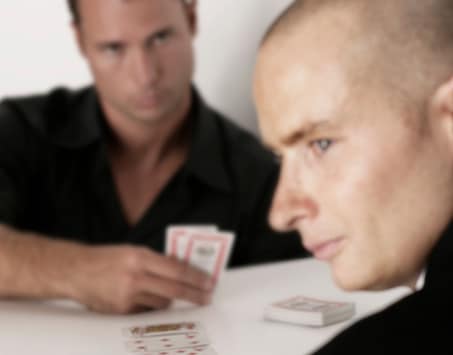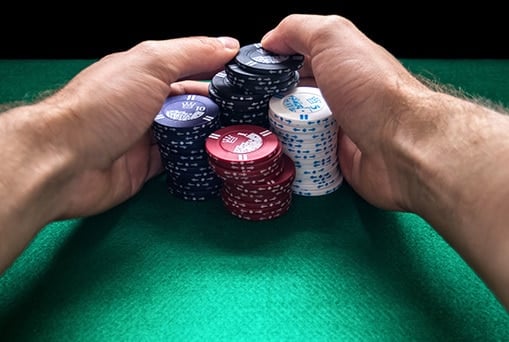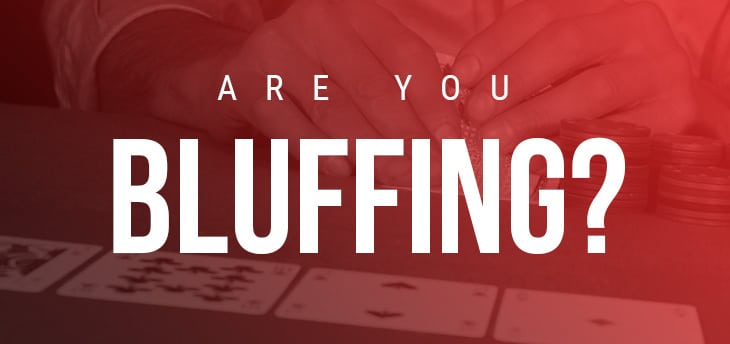If you’ve never played poker, you might think it is a game for gamblers. I used to think the same. However, poker is a rather complex game.
In poker, a good hand can only take you so far. Playing poker without bluffing is only playing half the game. While it may seem sensible for beginners to take the cautious approach, this differs from how the game should be played. A good player should always seek to make a profit whenever an opportunity arises, and bluffing can help you do just that.
Bluffing in poker is the art of convincing your opponent to fold a better hand than yours. It is the opposite of a value bet. When you place a bet for value, you hope to be called by a worse hand. When you bluff, you hope your opponent folds a better hand.

Your Opponents:
Your opponents ultimately determine whether your bluff will be successful. If you bet and they fold, your bluff works, and you win the hand. If you bet and they call, your bluff fails.
Different types of poker players require different strategies. It would be best if you chose the right opponents to bluff against. Ideally, you want to bluff against only one opponent. While there are times when your bluff will work against an entire lineup, you usually want it to be a head-to-head encounter. It would help if you avoided bad players for your bluffs. You want to avoid bluffing against someone so inept that they don’t consider your bet when deciding whether to call or fold. You also want to avoid bluffing against a player too loose to fold their hand to your bet, even if they think you have the upper hand. After all, if they’re too careless to consider what your bet implies, they will likely hold onto their hand regardless of your actions. So, refrain from bluffing against someone who calls too often. As the saying goes, it’s easier to bluff a good player than a bad one.
Steal the Blinds More Often:
The simplest way to start bluffing more in poker is to steal the blinds more frequently. Many people believe you need a really good hand to steal the blinds. This is not the truth. You just need the right type of players in the blinds – tight and weak.

Your Image:
Your table image plays a significant role in whether your bluff will be successful. You need to be aware of how you are perceived to exploit it. If you’re seen as a tight player, your bets will more likely be perceived as representing strength, and your bluffs will more likely succeed. Conversely, if you’re perceived as a wild player who throws chips around recklessly, your bluffs will almost surely fail, as you’re likely to be called. Consider how others perceive you and bluff accordingly.
Four Different Types of Bluffs:
- Continuation bet bluff: This is a bet where you have the initiative and rely on your opponent not connecting with the board.
- Semi-bluff: This is a bet when your hand is weak, if not devoid of showdown value, but there’s a decent chance you could make a strong hand. Examples are flush draws and straight draws.
- Zero equity/stone-cold bluff: This bluff is when you have almost no chance of improving to the best hand and relies entirely on fold equity to show a profit.
- Opportunistic bluff: This kind of bluff occurs when none of the other players in the hand have shown any interest in the pot. You expect this bet to work frequently enough to show a profit if nobody else is likely to have a strong hand.
Your Position:
Your position relative to the remaining player or players in the hand is an important consideration. Generally, you want to gauge your opponent’s reaction to the board before deciding to bluff. This makes bluffing in a late position more advantageous than in an early one. If your opponent checks, you can often assume they’re weak and place a bet. If you have to bet or check first, you won’t have the advantage of seeing their reaction to the board.

Bluff Your Missed Draws on the River:
Bluffing on the river is the real key to winning more pots without a showdown in Texas Hold ’em. The best time to do this is when you have a missed draw on the river, because you probably aren’t going to win the pot with a king high, for example. Once again, you must ensure you’re doing this only against those weak and timid players who are prone to making big, hero folds. Also, you need to make sure you are telling a believable story when bluffing on the river in poker.
Bet Size:
In no-limit games, it’s important to consider the size of your bet when bluffing. Ideally, you want to bet the minimum amount necessary to get your opponent to fold. It may seem that betting more would likely lead your opponent to fold. As a practical matter, this is rarely true. It’s better to think about thresholds beyond which opponents will not call. You want to get as close to that threshold as possible.
Conclusion:
Don’t be afraid to bluff! When done correctly, bluffing can be profitable. However, it is important to remember that you do not need to bluff to win money at poker, especially if you are new to the game. It is far better to play your good hands well rather than make your opponents fold when you have no idea whether they will call.
Finally, remember that bluffing is a skill that’s easy to learn but hard to master. So, the next time you’re at the tables, remember that to win a hand, you don’t always need a good hand. Sometimes, all you need to do is bluff, and that is power poker. Have fun at the tables, and thanks for reading!

